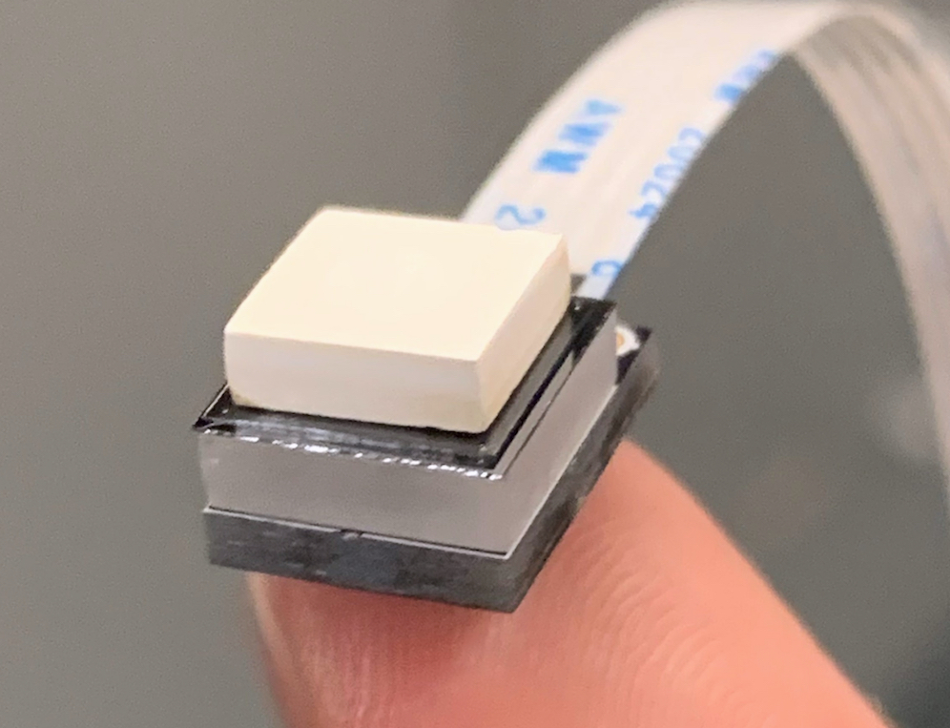Jun 23 2020
Per-acre yields are nearing their theoretical limitations after many years of growing soybean and corn yields throughout the Midwest’s Corn Belt. However, more grain is still required to feed livestock and people.
 This sensor can be buried to continuously measure water tension in soil, a reading that can be related to soil water content. It’s part of a cyber-physical agriculture system being developed by researchers at Iowa State University and the University of Nebraska-Lincoln. Image Credit: Photo courtesy of Liang Dong.
This sensor can be buried to continuously measure water tension in soil, a reading that can be related to soil water content. It’s part of a cyber-physical agriculture system being developed by researchers at Iowa State University and the University of Nebraska-Lincoln. Image Credit: Photo courtesy of Liang Dong.
But where would that grain come from? How can fields and farmers produce even more grain? Is a novel, sustainable way available to increase productivity?
According to agronomists, geneticists, engineers, machine-learning experts, and system modelers from Iowa State University and the University of Nebraska-Lincoln, there might be a solution.
The team is integrating its computing, electronics, crop know-how to create a system that will estimate productivity, continuously track fields at near single-plant resolution, and help farmers handle their fertilizer and water use.
The idea is to combine and interact two subsystem—a cyber system and a physical system to solve problems. We want to build a new CPS (cyber-physical system) to improve agricultural management for crop production, environmental quality and agricultural systems sustainability.
Liang Dong, Project Leader and Professor, Department of Electrical and Computer Engineering, Iowa State University
The U.S. Department of Agriculture has awarded a three-year, $1.05 million grant to Iowa State University and the University of Nebraska-Lincoln to support this joint effort.
Apart from Dong, the research group includes Patrick Schnable, a Charles F. Curtiss Distinguished Professor in Agriculture and Life Science from Iowa State University, the Iowa Corn Promotion Board Endowed Chair in Genetics, director of the Plant Sciences Institute, and the Baker Scholar of Agricultural Entrepreneurship.
Schnable is joined by Michael Castellano, the William T. Frankenberger Professor in Soil Science; Baskar Ganapathysubramanian, the Joseph C. and Elizabeth A. Anderlik Professor in Engineering; Sotirios Archontoulis, an associate professor of agronomy; James Schnable, an associate professor and the Dr. Charles O. Gardner Professor of Agronomy at the University of Nebraska-Lincoln; and Yeyin Shi, an assistant professor and agricultural information system engineer.
According to Dong, who has successfully created plant and soil nutrient sensors, soil water potential sensors, and wearable plant sensors, the scientists will collectively link up all types of tools while building and testing a real-time, data-driven system—whole-field monitoring with sensors installed on unmanned aerial vehicles, high-performance/low-cost field sensors, analytic engines, control systems, testbeds, and decision-making algorithms.
For instance, the system could perceive that crop plants are not as green as they are supposed to be and will search for causes such as low nitrogen levels and lack of water.
“By simultaneously detecting plant performance and diagnosing the cause, we can actuate the proper response,” wrote the scientists in a project summary.
In regions where fields are generally irrigated, that response may involve controlled delivery of nitrogen fertilizer and water to only those areas of a field that require them. This approach may reduce the cost and amount of fertilizer applications and, at the same time, reduce the proportion of fertilizer running off fields and feeding dangerous algal blooms found in lakes, rivers, and the Gulf of Mexico.
Integrating and networking several different tools is the key to this novel system.
We have looked at developing sensor-based technological solutions to help agronomists. We have designed these soil and plant sensors. This time, we’re combining different sensors, models and controls all together to explain and predict plant-soil dynamics at high and unprecedented resolution.
Liang Dong, Project Leader and Professor, Department of Electrical and Computer Engineering, Iowa State University
Dong continued, “We’re generating actionable information for decisions about the control, scheduling and application of water and fertilizer at variable rates along the center pivot of an irrigation system.”
While it is definitely an advanced system, it also provides a practical method to help farmers develop yields and enhance sustainability.
“We hope, this isn’t science fiction,” Dong concluded.